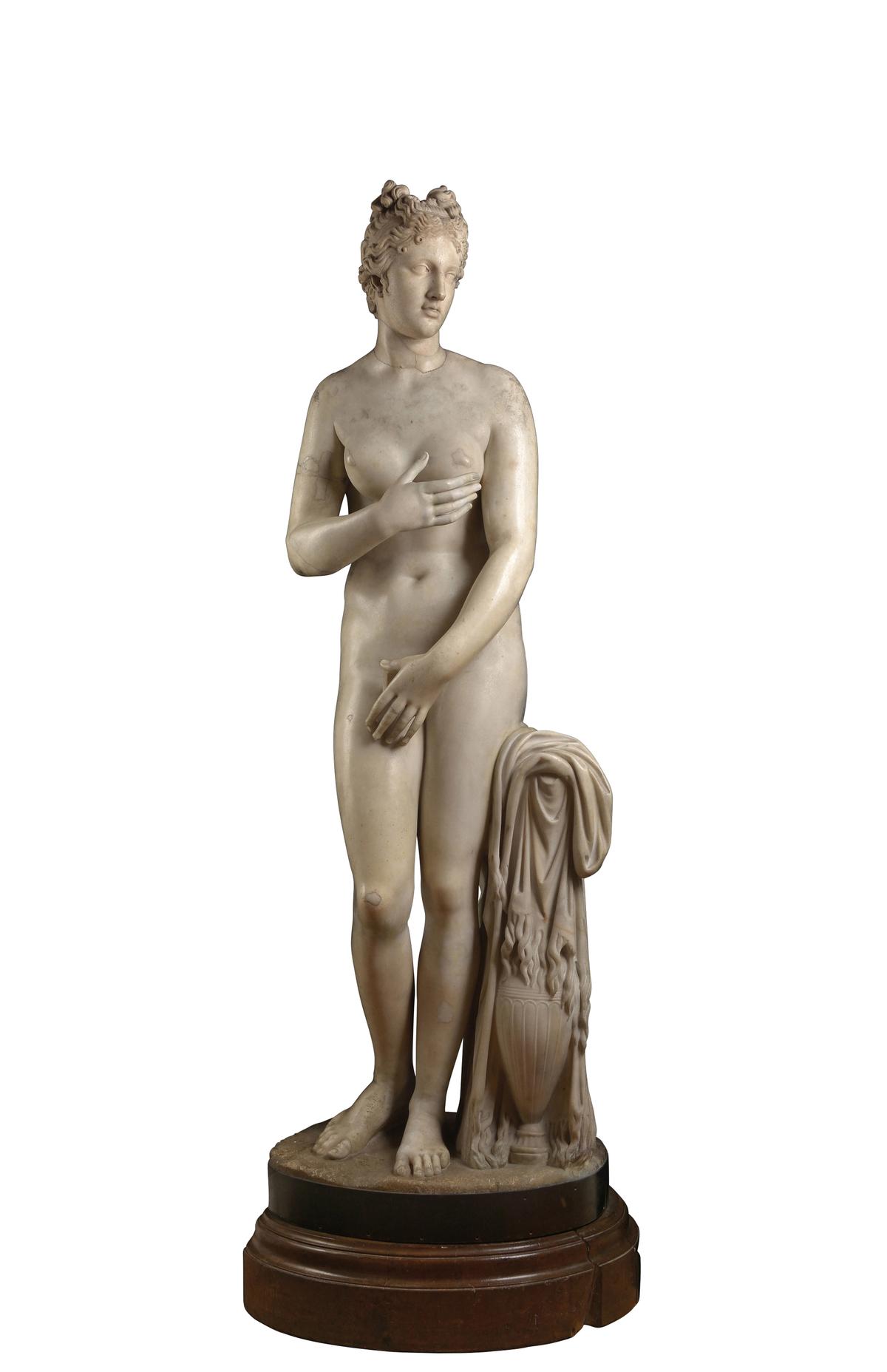The Hamilton Aphrodite, a Roman marble last sold at auction in New York in 1949, is to be offered in a dedicated sale at Sotheby's in London on 7 December, estimated at £2m to £3m.
The larger than life-size marble, which unusually stands 187cm high, dates back to the 1st or 2nd century AD and was bought in Rome in 1776 by Douglas Hamilton, 8th Duke of Hamilton, from the Scottish neoclassical painter and art dealer, Gavin Hamilton, while on his Grand Tour. The Duke bought it home to Hamilton Palace in Scotland where it remained for 144 years, until 1919.
The purchase was recorded in 1776 by Gavin Hamilton, who wrote: “The large Venus I had in my possession is now on its way to Scotland. The Duke of Hamilton fell in love with it the moment he saw it, and secured it immediately.”
As Florent Heintz, the head of Sotheby’s ancient sculpture and works of art department, says, while the marble at first glance appears to be in very good condition, it has considerable 18th-century restorations—as is usual with ancient marbles. "British antiquities dealers, like Hamilton, in the 18th century worked hand-in-hand with Italian restorers," Heintz says.
In the case of the Aphrodite: "The support next to her left leg is 18th century—an exact copy of the support that is on the Aphrodite in the Capitoline museum in Rome. Then the right forearm, hand and the central part of the neck are also 18th century." He adds: "The head, we know from a letter written by Gavin Hamilton, was actually from another statue." But such later restorations are considered "par for the course" in marbles of this period.
In 1920, the Hamilton Aphrodite was bought through the London-based dealers Spink and Son by the American politician and publishing magnate William Randolph Hearst. It went to his Bronx warehouse (famously depicted in the film Citizen Kane) but, according to Heintz, was probably left in its crate for two decades until it was sold to the Hungarian-born, New York-based art dealer, Joseph Brummer. The marble last appeared in Brummer's estate sale in 1949 at Parke-Bernet Galleries, New York.
The marble then disappeared from view, into a private collection, until Heintz received an email from a Sotheby's representative six or seven years ago, "with some images of the Aphrodite asking if it was worth anything." He immediately recognised it as one of the Hamilton Palace marbles but only now does it come to market—a slow burner.
But as Heintz says, "that's often the way with antiquities."


